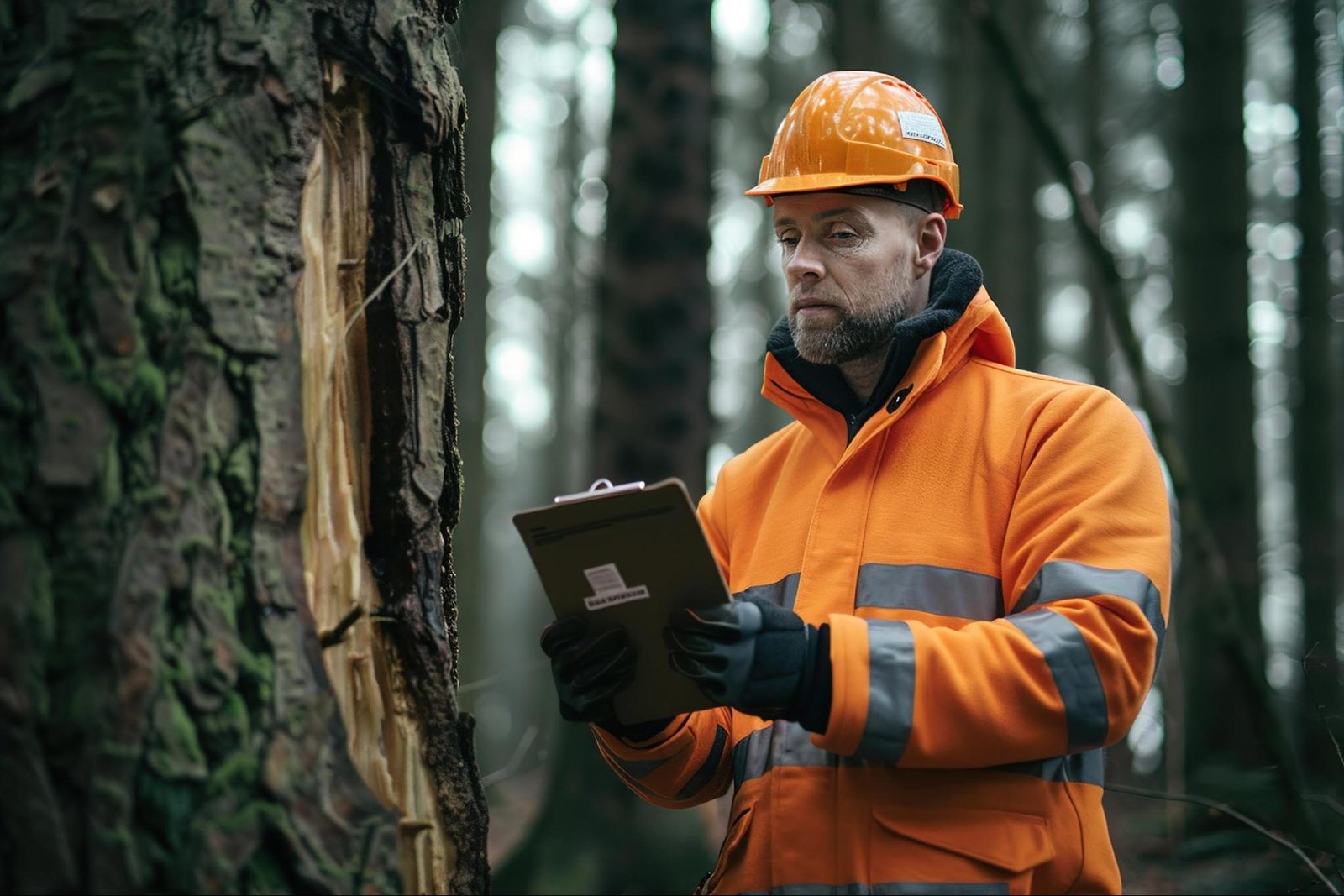
Image: surveyor with iPad plotting points.
These points lay out a road map for BNG to fulfil the promise that was made in the 2021 Environment Act to actually deliver something meaningful and beneficial for biodiversity.
Our primary response is that any legislation must remember the original intent of BNG: to enhance and restore biodiversity across England.
Here are eight components we believe will make it possible to deliver BNG in a way that is sustainable, and they hold up even in the face of climate change, which is going to have an effect on habitat performance over the next few years—adaptation to which is going to have to be an essential component of delivering BNG.
Private Investment is Need for BNG to Succeed
BNG can incur a significant cost in HMT’s aim of drawing in half a billion pounds every year from the private sector for UK nature by 2027—and a billion by 2030.
Planning authorities, Natural England and third sector environmental organisations should not be given an unfair advantage. Private investment should be encouraged and incentivised to deliver biodiversity net gain. Otherwise, there is a very real risk that the promised increase in biodiversity will not happen at the scale or pace needed to avert serious environmental threats to our planet.
Equal Treatment in BNG
The BNG market demands stability and growth, and it can not achieve either if it does not have one set of rules that everyone follows. Nobody should expect special treatment; if there is a BNG rulebook, then public sector, private sector, on-site, and off-site agents should all obey BNG law. The biggest issues that could use some clarity and that could serve up some level playing field to BNG market participants are: (1) technical requirements; (2) legal requirements; and (3) financial requirements.
On-site habitat creation must be genuine biodiversity enhancement
We understand that on-site habitat creation has a market niche: that’s because developers have learned that they can do better in terms of ecology and planning permission if they deliver high-quality developments that make nature accessible, meet high standards, have a lot of visual appeal, and deliver multiple environmental functions.
These elevated design standards should be the minimum anywhere, irrespective of any new laws brought in that require BNG. They shouldn’t be used as a cover for genuine biodiversity enhancement when things get built. The over arching aim of BNG is addressing the national biodiversity crisis and doing it in a way that doesn’t generate too many conflicts between various forms of development.
The Limitations of Small Scale Off-site BNG delivery
When complex ecological and environmental compensation and mitigation requirements need to be met, a tailored option is an obvious choice. Good management plans can provide the tailored solutions needed, but they do work best at the scale of an individual farm.
When funding is secure, when the plans have the necessary legal underpinning, and when the plans are not so small that scale effects kick in, there seems to be no reason why farms should not aim to deliver the best possible biodiversity net gains.

Image: surveyor with notepad checking tree.
Habitat Banking has the greatest chance of meeting BNG Requirements for Developers
When equipped with stable funding, solid contracts, and skilled administrators, Habitat Banks can provide Biodiversity Net Gain at the scale and with the permanence needed to satisfy most developers.
They’re a lot less complicated and a lot more beneficial than other ways of trying to achieve BNG. They work, in short, because they’re much closer to being what they should be: actual banks that “capitalise” biodiversity gain and provide a secure income for rural communities.
Investors who take the biggest risks should not be penalised
Our best chance for quickly achieving nature recovery is at vast scales. The bigger the scale, the more investment there is; and the more investment there is, the greater the risk to those putting in money in this emerging marketplace.
Private investment needs a friendly emerging legislative and regulatory framework to scale up. We shouldn’t push it away with unfriendly, risk-averse regulations. The emerging outcomes must be the driving light in the regulatory tunnel and we shouldn’t dim that light for private investors.
Local Nature Recovery Strategies (LNRS) need Flexibility
We laud the creation of spatial networks that indicate where substantial contributions to recovering the natural world can be made. However, if we lean too heavily on these and use an alternative, top-down model that locates nature through a mapping exercise alone, we will miss vital opportunities for recovering the natural world.
People who own land outside these networks shouldn’t be put off from doing positive things for nature. We want the current flexibility in how to apply and weigh the networks measured by the DEFRA metric–which already rewards those providers who do contribute most to the LNRSs.
Clarity on how the spatial hierarchy can be applied will result in the best BNG outcomes
We support the need to adhere to the spatial hierarchy, but we suggest that Local Planning Authorities (LPAs) should be given advice on the delivery of BNG ‘across borders’ where all possibilities have been exhausted locally, and there are ecologically sound BNG options located outside the LPA jurisdiction. For example, in places like London, there is unlikely to be the necessary land available to deliver BNG within the local authority boundaries, so alternatives must be considered.


